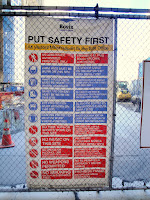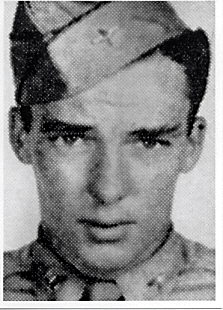America is rising at the World Trade Center in Lower Manhattan. New York, once again (see photos below). I discovered just how much progress has been made a the World Trade Center when I went to New York Cit on October 9th, 2010 to see a Lord of the Rings movie backed by a Swiss orchestra and choir.
My son Josh took me (he's the more handsome and thinner one in the photos below).
My son Josh took me (he's the more handsome and thinner one in the photos below).
 I was amazed to discover just how much progress had been made redesigning, recreating, and rebuilding the World Trade Center area. We saw thousands of families of foreign tourists all over the area enjoying themselves tin the sun taking pictures, eating well, and peacefully walking. Given how complex this project is to construct (see links below), it is a miracle they have been able to build all the underground layers and are now going skyward.
I was amazed to discover just how much progress had been made redesigning, recreating, and rebuilding the World Trade Center area. We saw thousands of families of foreign tourists all over the area enjoying themselves tin the sun taking pictures, eating well, and peacefully walking. Given how complex this project is to construct (see links below), it is a miracle they have been able to build all the underground layers and are now going skyward.View photos, videos, and the story of the World Trade Center Rising.
Lower Manhattan Construction and Command Center
Our serendipity discovery was St. Peter's Parish death and resurrection at Ground Zero.
 I thought it was the First Bank of the US. To my surprise, it was St., Peter's, a parish rich in history for 200 years before 9/11, during that event, and after (see photo's below). According to the priest I spoke with after mass, fortunately, after the Protestants burned the original St. Peter's during anti-Catholic riots in the late 1700's, the Catholics then rebuilt it with marble, stone, and brass. I say fortunately, because when the landing gear from one the jets the shariah jihadi's hijacked fell through the roof of St. Peter's, the second roof held. When I asked the priest after mass why I never heard of St. Peter's, he said, "We keep a low profile. We let Trinity around the corner take all the glory for that day."Interesting comment when you consider: "The body of Father Mychal Judge, the Franciscan fire chaplain killed by falling debris in the lobby of the North Tower, was carried into St. Peter's Church and reverently placed before the altar. Source
I thought it was the First Bank of the US. To my surprise, it was St., Peter's, a parish rich in history for 200 years before 9/11, during that event, and after (see photo's below). According to the priest I spoke with after mass, fortunately, after the Protestants burned the original St. Peter's during anti-Catholic riots in the late 1700's, the Catholics then rebuilt it with marble, stone, and brass. I say fortunately, because when the landing gear from one the jets the shariah jihadi's hijacked fell through the roof of St. Peter's, the second roof held. When I asked the priest after mass why I never heard of St. Peter's, he said, "We keep a low profile. We let Trinity around the corner take all the glory for that day."Interesting comment when you consider: "The body of Father Mychal Judge, the Franciscan fire chaplain killed by falling debris in the lobby of the North Tower, was carried into St. Peter's Church and reverently placed before the altar. Source
 When I asked him about the sharia conquest center that the Wahhabi's and Muslim brotherhood wanted to build around the corner, he said, "Don't worry. I know from people way up that it won't happen. Our leader here thinks the Muslims are suffering persecution like the Catholics did, but he's nuts."
When I asked him about the sharia conquest center that the Wahhabi's and Muslim brotherhood wanted to build around the corner, he said, "Don't worry. I know from people way up that it won't happen. Our leader here thinks the Muslims are suffering persecution like the Catholics did, but he's nuts."
That made me smile a mile wide and made my heart an ocean of joy. With so many shariah believers, infiltrators, and aggressors now so high up in the White House, intelligence services, and other place in government, it is great that there are still patriots defending the Constitution and the American Way of Life, quietly and professionally, every day. Think this is far fetched? See the facts here.
While so much media attention has been focused on the sharia mosque conquest building, these wonders of technology and the human spirit have been going up daily. My thanks to the thousands of workers and managers and visionaries who are making this eighth wonder of the world possible and practical for everyone.







Our serendipity discovery was St. Peter's Parish death and resurrection at Ground Zero.
 I thought it was the First Bank of the US. To my surprise, it was St., Peter's, a parish rich in history for 200 years before 9/11, during that event, and after (see photo's below). According to the priest I spoke with after mass, fortunately, after the Protestants burned the original St. Peter's during anti-Catholic riots in the late 1700's, the Catholics then rebuilt it with marble, stone, and brass. I say fortunately, because when the landing gear from one the jets the shariah jihadi's hijacked fell through the roof of St. Peter's, the second roof held. When I asked the priest after mass why I never heard of St. Peter's, he said, "We keep a low profile. We let Trinity around the corner take all the glory for that day."Interesting comment when you consider: "The body of Father Mychal Judge, the Franciscan fire chaplain killed by falling debris in the lobby of the North Tower, was carried into St. Peter's Church and reverently placed before the altar. Source
I thought it was the First Bank of the US. To my surprise, it was St., Peter's, a parish rich in history for 200 years before 9/11, during that event, and after (see photo's below). According to the priest I spoke with after mass, fortunately, after the Protestants burned the original St. Peter's during anti-Catholic riots in the late 1700's, the Catholics then rebuilt it with marble, stone, and brass. I say fortunately, because when the landing gear from one the jets the shariah jihadi's hijacked fell through the roof of St. Peter's, the second roof held. When I asked the priest after mass why I never heard of St. Peter's, he said, "We keep a low profile. We let Trinity around the corner take all the glory for that day."Interesting comment when you consider: "The body of Father Mychal Judge, the Franciscan fire chaplain killed by falling debris in the lobby of the North Tower, was carried into St. Peter's Church and reverently placed before the altar. Source When I asked him about the sharia conquest center that the Wahhabi's and Muslim brotherhood wanted to build around the corner, he said, "Don't worry. I know from people way up that it won't happen. Our leader here thinks the Muslims are suffering persecution like the Catholics did, but he's nuts."
When I asked him about the sharia conquest center that the Wahhabi's and Muslim brotherhood wanted to build around the corner, he said, "Don't worry. I know from people way up that it won't happen. Our leader here thinks the Muslims are suffering persecution like the Catholics did, but he's nuts."That made me smile a mile wide and made my heart an ocean of joy. With so many shariah believers, infiltrators, and aggressors now so high up in the White House, intelligence services, and other place in government, it is great that there are still patriots defending the Constitution and the American Way of Life, quietly and professionally, every day. Think this is far fetched? See the facts here.
While so much media attention has been focused on the sharia mosque conquest building, these wonders of technology and the human spirit have been going up daily. My thanks to the thousands of workers and managers and visionaries who are making this eighth wonder of the world possible and practical for everyone.




























































